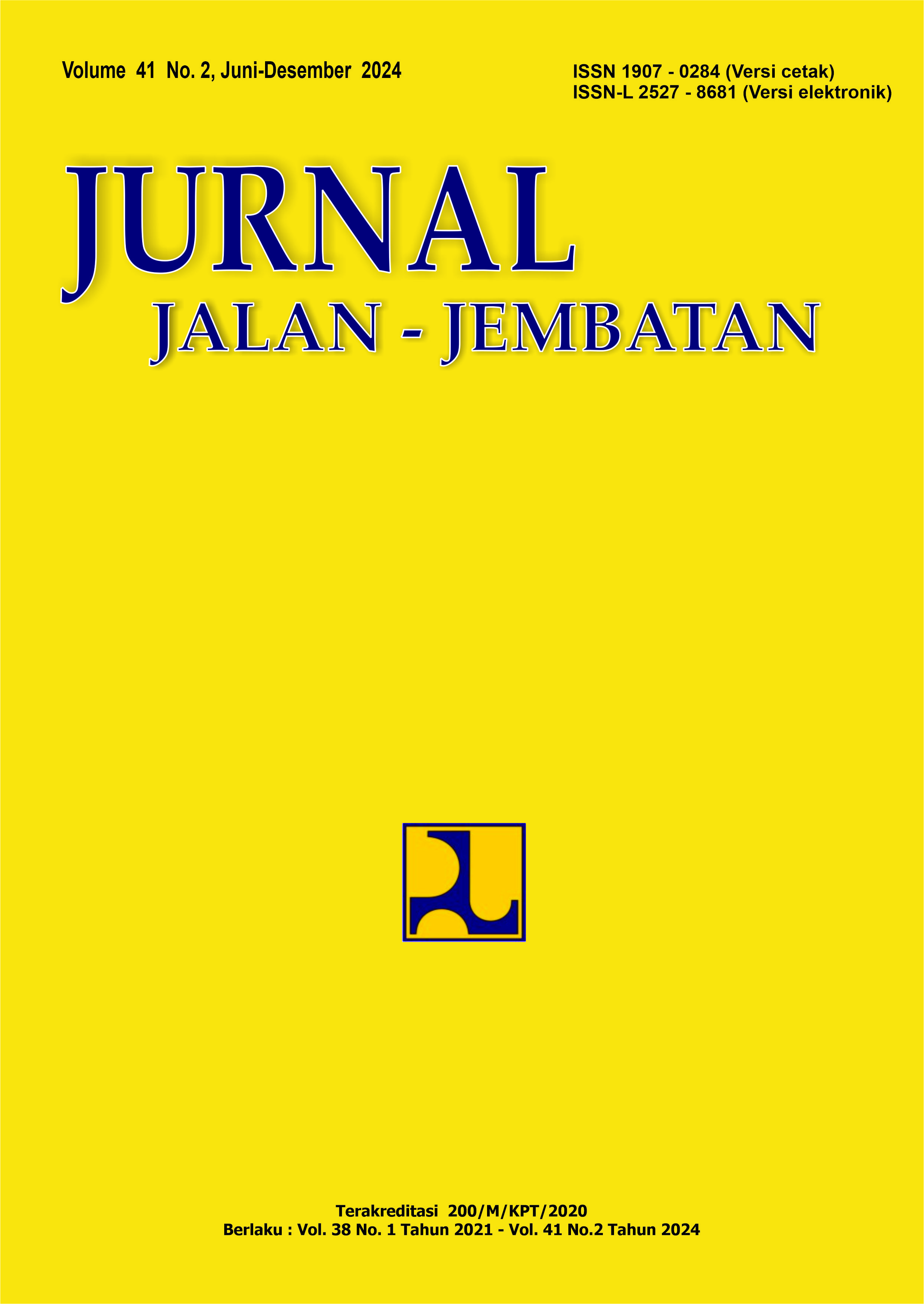UTILIZATION OF GROUND GRANULATE BLAST FURNACE SLAG (GGBFS) WASTE AS GEOPOLYMER MATERIAL FOR SUBGRADE STABILIZATION
Main Article Content
Abstract
Ground Granulate Blast Furnace Slag (GGBFS) is a by-product or non-metallic waste from the iron and steel production process. GGBFS is currently widely applied as an additive to mortar mixtures because it has pozzolanic properties. It can also be used as a material for stabilizing subgrade soil that is not included in the technical requirements for road pavement. GGBFS is a geopolymer material with NaOH and Na2SiO3 as an alkali activator to produce a solid polymer bond like cement. The concentration of 10 M NaOH used is with a solution ratio of 2.0 (Na2SiO3 to NaOH), variations in GGBFS content of 0% and 20%, and variations in S/L content (GGBFS to activator) of 1/2 and 1/2.5; which is mixed with the original soil to make a sample of an Unconfined Compression Test (UCT), with the curing of the UCT test specimens carried out for 0, 7, 14, and 28 days. From the test results, the original soil sample is of the OH soil type. The results of UCT testing of original soil samples without stabilization with a curing time of 28 days were 1.59 kg/cm2, while the stabilized soil sample (80% soil, 20% GGBFS, alkali activator S/L (1/2.5)) was 29.386 kg/cm2. The results of UCT testing showed a significant increase in soil strength values , so geopolymers with GGBFS and (NaOH; Na2SiO3) materials can be used as soil stabilization materials like Portland cement.
Article Details

This work is licensed under a Creative Commons Attribution-NonCommercial-ShareAlike 4.0 International License.
Authors who publish in this journal agree to the following terms:
-
Authors retain copyright and grant the journal the right of first publication with the work simultaneously licensed under a Creative Commons Attribution License, which allows others to share the work with acknowledgment of the work's authorship and initial publication in this journal.
-
Authors may enter into additional contractual arrangements for the non-exclusive distribution of the journal's published version of the work (e.g., post it to an institutional repository or publish it in a book), with acknowledgment of its initial publication in this journal.
-
Authors are permitted and encouraged to post their work online (e.g., in institutional repositories or on their website) as it can lead to productive exchanges, as well as earlier and greater citation of the published work.
Each submitted manuscript must be accompanied by a "Manuscript Originality Statement" and a "Copyright Transfer Statement".

